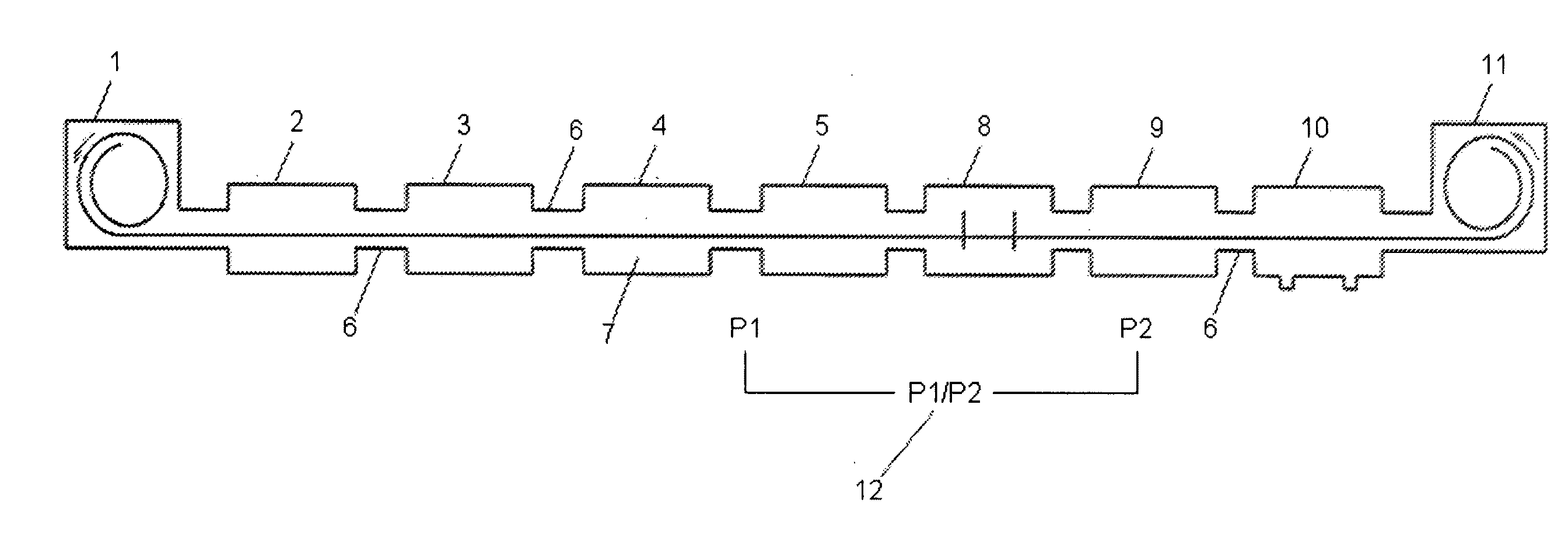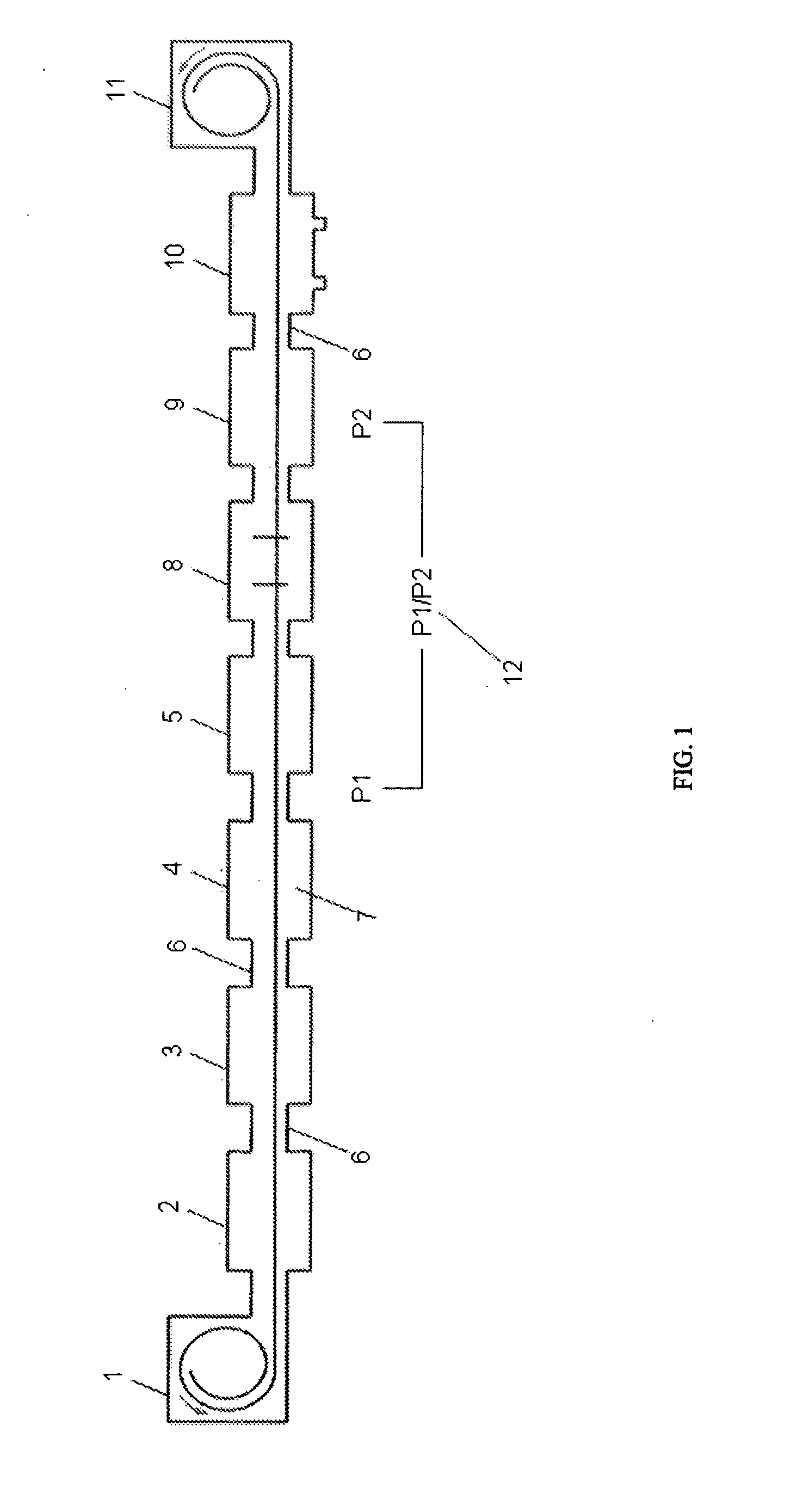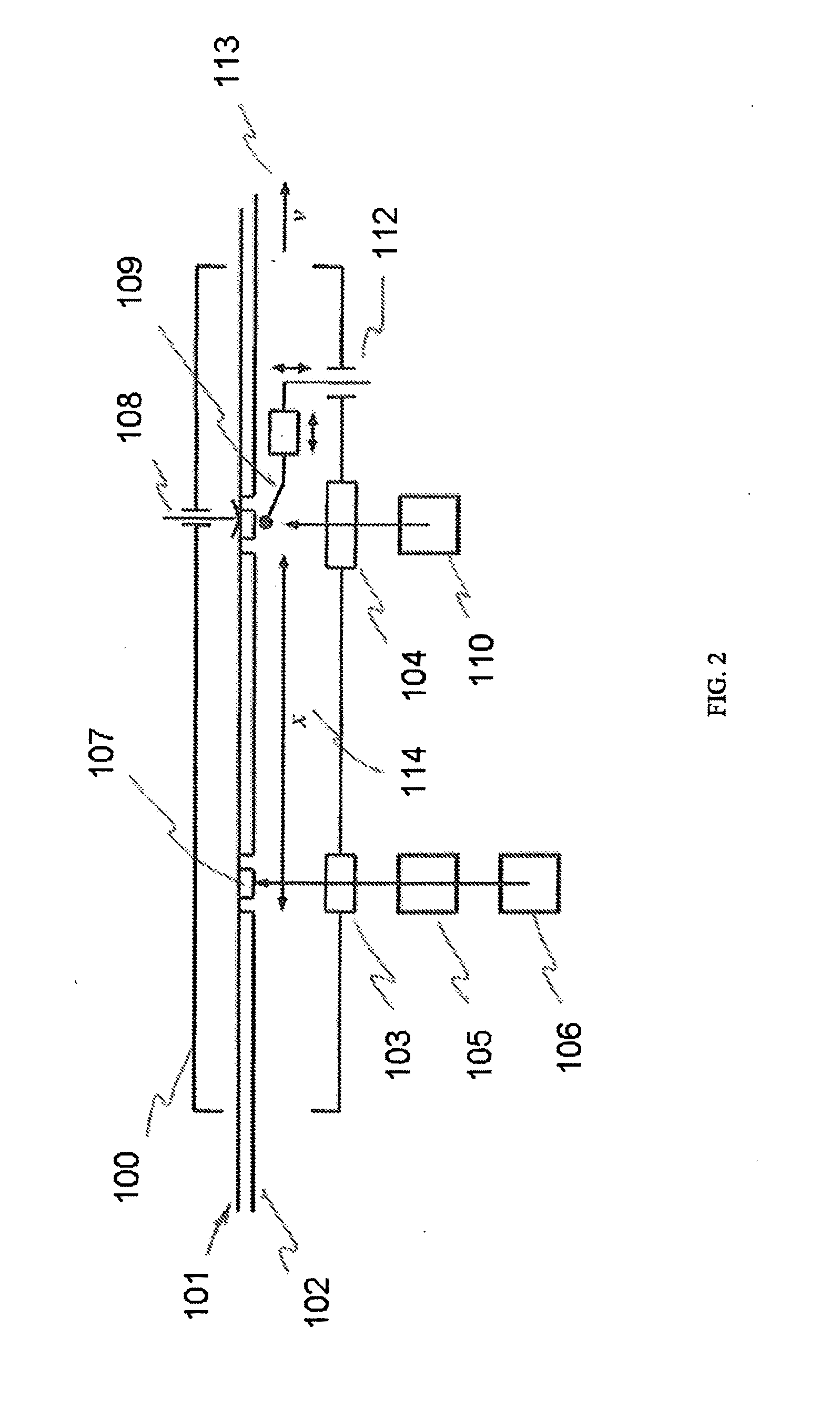Isolation chamber and method of using the isolation chamber to make solar cell material
- Summary
- Abstract
- Description
- Claims
- Application Information
AI Technical Summary
Benefits of technology
Problems solved by technology
Method used
Image
Examples
example 1
[0069]FIG. 6 illustrates a DPIU 500 comprising an evacuation space 503 in fluid communication with a first PIU 501 and a second PIU 502. One port of the first PIU 501 is connected to a first deposition space 507 while a second port of PIU 501 is connected to the evacuation space 503. One port of the second PIU 502 is connected to a second deposition space 508 and a second port of PIU 502 is connected to the evacuation space 503. The pressure in the first deposition space 507 proximate the first PIU 501 is ‘PI’. The pressure in the second deposition space 508 proximate the second PIU 502 is ‘P4’. The pressure in the evacuation space 503 proximate the first PIU 501 is ‘P2’. The pressure in the evacuation space 403 proximate the second PIU 502 is ‘P3’. A first sweep gas (e.g., H2) is provided into the first PIU 501 via inlet port 505. A second sweep gas (e.g., Ar) is admitted into the second PIU 502 via inlet port 506. The first and second sweep gases are removed from the evacuation sp...
example 2
[0070]A plurality or roll-to-roll deposition systems may be used to form the photovoltaic cell of FIG. 7. A large-scale thin-film silicon solar cell production line in the front-end facility comprises one roll-to-roll washing machine (not shown), one back reflector roll-to-roll production machine (FIG. 8) and one PECVD / ITO roll-to-roll production machine (FIG. 9). Stainless steel (SS) coils are used as substrates, which in some embodiments may have a thickness of 0.005″ (0.127 mm), a minimum width of 10″, a preferable width of 36″, and a minimum length of 5000 ft.
[0071]In the roll-to-roll washing machine, a roll of an uncleaned SS web substrate loaded at pay-off (wind-off) chamber is guided in a roll-to-roll wet chemical cleaning process through a detergent tank, a DI water rinse tank, a blower and dry station. An oil-free, particle-free, clean SS substrate web is then wound up together with protective interleaf onto a core at the take-up (windup) chamber of the washing machine.
[007...
example 3
[0074]With reference to FIG. 10, a vacuum roll-to-roll thin-film production machine may be used to form the photovoltaic cell of FIG. 7. The roll-to-roll production machine, illustrated in two sections to fit on the page, may be a single, continuous, roll-to-roll system. A large-scale thin-film silicon solar cell roll-to-roll production machine in the front-end facility comprises a substrate payout chamber, a plasma cleaning chamber, a back-reflector sputtering deposition chamber, a thin film silicon PECVD deposition chamber, a transparent conductor deposition chamber, and a substrate take up chamber. A differential process isolation unit (DPIU) is disposed between the back-reflector deposition chamber and the PECVD chamber. A second DPIU is disposed between the PECVD chamber and the transparent conductor deposition chamber. Stainless steel (SS) coils are used as substrates, which have a thickness of about 0.005″ (0.127 mm), a minimum width of about 10″, a preferable width of about ...
PUM
| Property | Measurement | Unit |
|---|---|---|
| Length | aaaaa | aaaaa |
| Length | aaaaa | aaaaa |
| Pressure | aaaaa | aaaaa |
Abstract
Description
Claims
Application Information
 Login to View More
Login to View More - R&D
- Intellectual Property
- Life Sciences
- Materials
- Tech Scout
- Unparalleled Data Quality
- Higher Quality Content
- 60% Fewer Hallucinations
Browse by: Latest US Patents, China's latest patents, Technical Efficacy Thesaurus, Application Domain, Technology Topic, Popular Technical Reports.
© 2025 PatSnap. All rights reserved.Legal|Privacy policy|Modern Slavery Act Transparency Statement|Sitemap|About US| Contact US: help@patsnap.com



